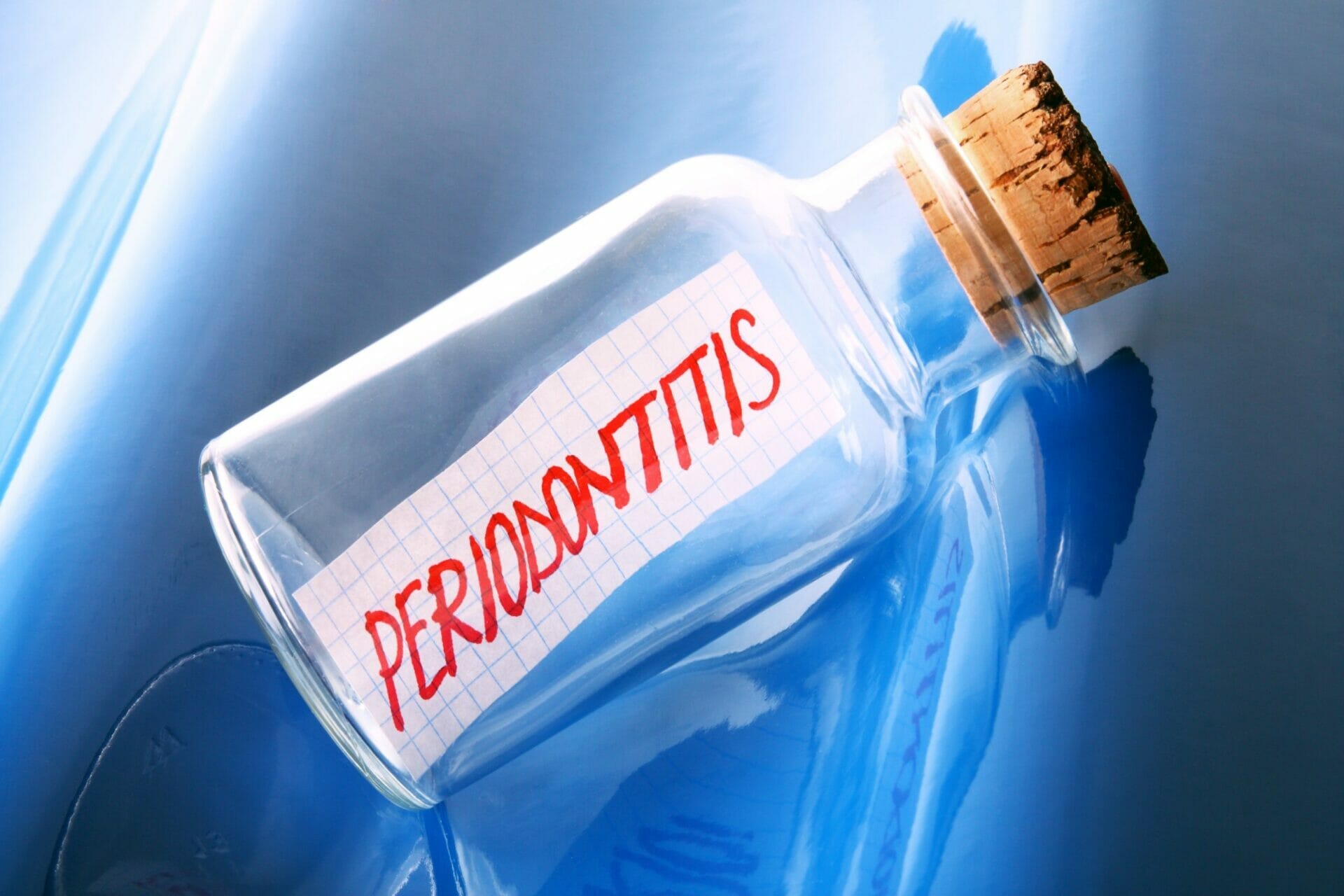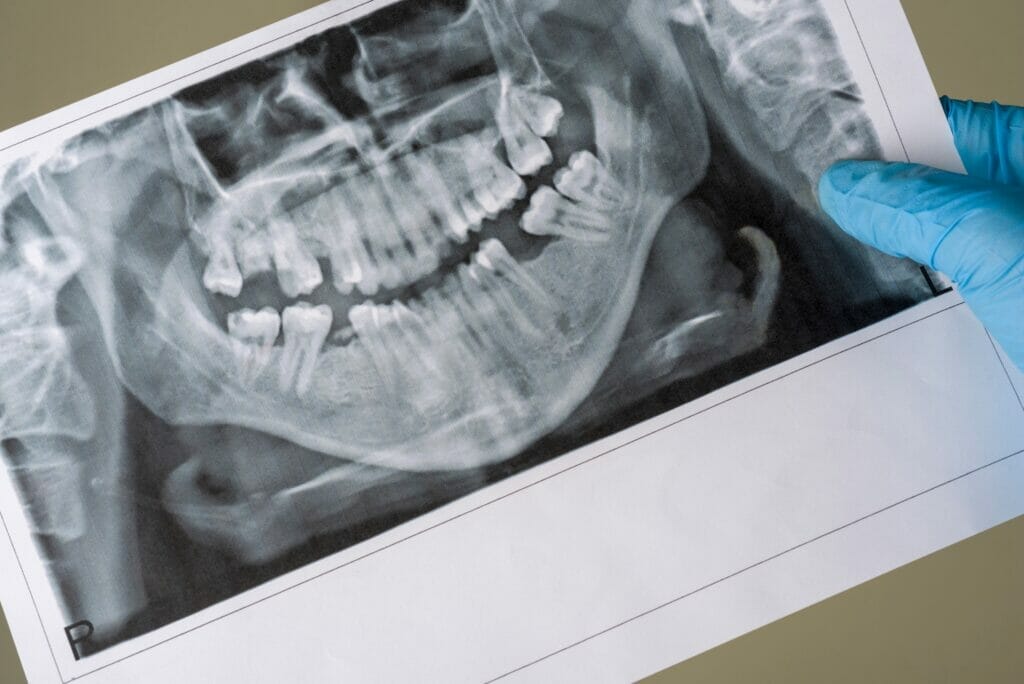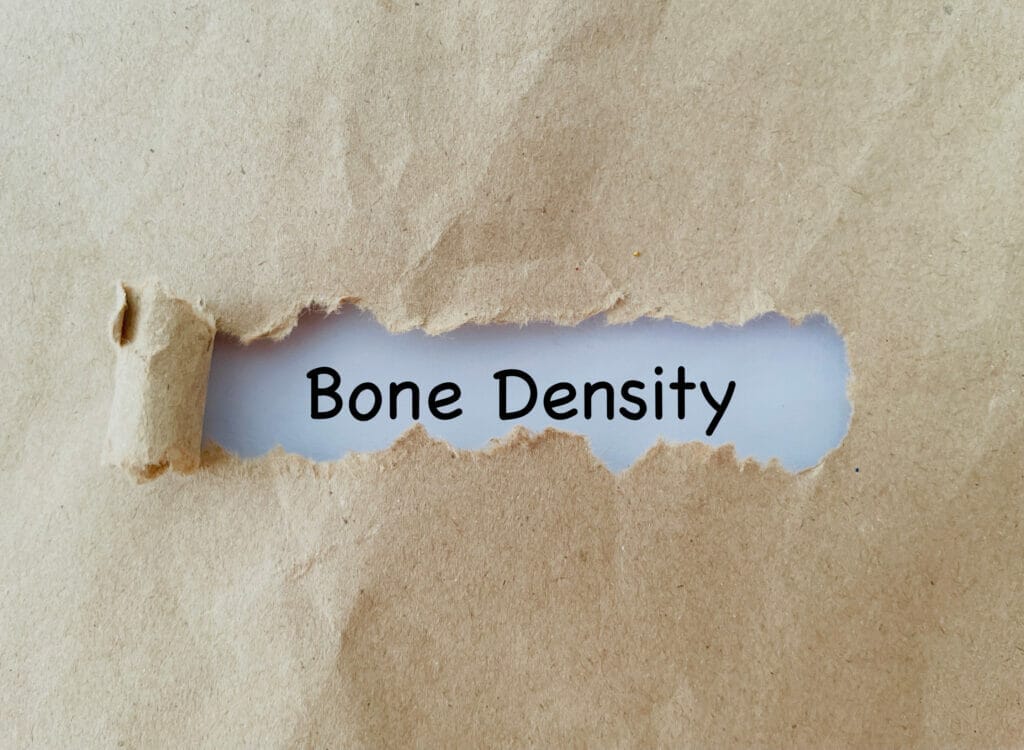
I am a Dentist in Kitchener, ON, and each week I like to explore a question that I commonly get at my Kitchener Family Dental office. This week, I'd like to discuss gum disease and bone loss around teeth, and whether this condition is reversible or not.
"Can dental bone loss be reversed?".
Many patients ask me this because they are concerned about the longevity of their teeth.
What problems can occur with progressive dental bone loss?
Dental bone loss can reduce support for teeth. It can also result in gum recession. Progressively, teeth with bone loss can become loose and it can even become painful to eat.
In severe cases, teeth suffering extensive loss of surrounding bone can become infected and require tooth extraction. Loss of teeth can bring about the need for costly dental treatment like dental bridges or even dental implants.
Bone loss can also lead to larger gaps and deeper gum pockets between teeth. This often increases "food trapping" where larger food debris gets stuck and can cause tooth decay.
Often, patients with bone loss leading to food traps require treatment for cavities and this can take the form of simple dental fillings or, in more severe cases, root canal treatment and dental crowns.
So, "can dental bone loss be reversed?". First let's look at the different types of bone loss because it will help us to understand which kinds of bone loss we can reverse and why.
When patients ask me if we can reverse the bone loss around their teeth, my answer is that it depends. Most commonly, dental bone loss occurs as a result of Periodontitis or "Gum Disease". Gum Disease results in slow bone loss over time. The cause is usually long-term accumulation of plaque, tartar and bacteria around and under the gums. If you don't floss much, brush your teeth regularly, or seek regular dental cleanings you will be at a higher risk of developing Periodontitis.
More rarely, bone loss results from local infection. This most commonly occurs in the case of abscessed or infected teeth (this is called Apical Periodontitis). Bacteria that cause infection leak out the tooth root tip and cause destruction of bone. In the image below, you can see the dark oval-like area under the tooth at far right. This is how a dental abscess and the resulting bone loss appear on a dental x-ray.
Most importantly, this area of bone loss is surrounded by healthy dense bone. In the next section, I will discuss why this is important!

As we discussed above, in the case of general and apical Periodontitis, bacteria can trigger bone loss. I use the term trigger simply because the bacteria themselves do not actually cause bone loss. Instead, it is our immune response to their presence that leads to bone destruction.
What else can lead to dental bone loss?
Smoking. Smoking gradually destroys the network that supplies blood, and therefore nutrition, to your gums. Also, smoking changes production of the tiny molecules (called enzymes) that maintain our gums.
The change in enzymes can lead to loss of supporting bone over time.
Another factor that can accelerate bone loss is tooth grinding or bruxism. Grinding places unnaturally heavy forces on teeth which can speed up bone loss in the presence of smoking and/or inadequate oral hygiene.
Finally, a far less common cause of bone loss involves both benign and malignant lesions of the jaws. Sometimes, these are benign cysts that erode jaw bone over time. In other cases, malignant cancers can cause tumours that lead to rapid bone loss in the jaws.
To heal infection and to regenerate and replace lost bone, we need to be able to supply the area with nutrients in the blood. So, if the bone loss is surrounded by healthy bone (as in the image above), we can eliminate infection (i.e. with root canal treatment) and then healthy bone will be able to provide a blood and nutrient supply to rebuild the area.
Now, when we talk about healing bone loss that occurs in Periodontitis, we have a much more difficult challenge.
If you think of the jawbone encasing your teeth as a body of water, it will help.
What I want you to focus on is that, for the most part, bone levels are flat like the surface of a body of water. Now, think of good bone levels as being similar to "high tide". When you lose bone to Periodontitis, you are moving toward "low tide" and, therefore, lower bone levels. Your teeth are in the same spot, but they are now submerged in less bone. Again, the key to this analogy is that the surface of the bone stays relatively flat through bone loss.
Now, the area of bone loss is not surrounded or contained in Periodontitis. Therefore, the only blood and nutrient supply to fuel new bone growth would come from a flat bone surface below. But, this nutrient supply doesn't tend to move upward and so bone regeneration never occurs. The best you can hope for is to control Periodontitis, stop its progression and stabilize bone levels. So, to answer our question "can dental bone loss be reversed?" in the context of Periodontitis, no it cannot be reversed (naturally) but it can be stopped.
Luckily, there are treatments for reversing some forms of dental bone loss and they are reviewed, below.
There are several bone grafting procedures that can help to reverse bone loss by regenerating bone. The most common of these is a technique called guided bone regeneration, or GBR. In this procedure, a soft putty-like form of bone is placed into defective areas so that your body can heal at the site and generate healthy new bone.
Several treatments exist for preventing bone loss. These vary widely in nature.
The first that I'd like to discuss is surgical dental cleanings, or open-flap debridement. This type of cleaning involves greater access deeper into gum pockets where a standard cleaning will fail to provide a full disinfection around teeth. The procedure involves gently peeling the gums away from teeth to enable improved access during cleaning.
Tooth loss is a common cause of dental bone loss. Following tooth extraction, the socket remodels and bone volume and density are lost. This is because jaw bone needs the constant stimulation provided by chewing forces to preserve its form and density.
Replacing lost teeth with dental implants can preserve bone at the site of dental extraction. Unfortunately, a denture will not preserve bone.
Is there a way to graft bone during extraction to prevent the need for a graft later?
Indeed, there is.
Socket preservation is a procedure where bone is grafted into the socket immediately after tooth extraction. The site is sutured, and your body heals the vacant socket with dense, healthy bone.
These treatments all provide ways to combat dental bone loss.
In most cases, dental bone loss around teeth occurs as a result of Periodontitis or gum disease. This process most commonly results when plaque, bacteria and other pro-inflammatory irritants remain on gum tissue and within gum pockets. If flossing and other cleaning efforts are irregular, the mouth will be in a constant pro-inflammatory state, fueling bone loss.
In other cases, patients who have pristine teeth and gums will have an overactive immune system that mounts an excessive attack on what is a normal, minimal level of pathogenic bacteria in the mouth. When the immune system mounts this attack, it produces lots of destructive substances and enzymes that also wear down and dissolve jaw bone. Bone loss occurs as a result.
Generally, your best efforts at preventing dental bone loss will involve the 2-3 by 2-3 approach. This means brushing 2-3 times a day for 2-3 minute each time. Then, try to floss at lunchtime and again in the evening. This is consistent with keeping plaque and pathogenic oral bacteria in a range consistent with stability of gums and teeth.
So, can active dental bone loss be reversed? This can be done but it's more challenging than simply preventing bone loss from the start. The additional challenge comes from trying to keep your teeth clean when you have already lost bone and gum tissue. This is because bone and gum loss makes for larger spaces between teeth and deeper gum pockets. Both defects allow for more trapping of plaque, food fibrils (think meats and vegetable strands) and ultimately, harmful bacteria.
Additionally, teeth with bone loss tend to be looser and more mobile. That means that, as you chew, plaque, food particles and bacteria can slide into gum pockets around loose teeth that wiggle as you chew.
Recall that, above, we talked about how smoking and tooth grinding can drive bone loss. Well, eliminating the habit of smoking can really improve your ability to curtail bone loss.
Additionally, a soft plastic night guard can be made by your Kitchener Dentist as a means of cushioning impact during nighttime tooth grinding. The Night Guard can also prevent chipping of teeth during grinding.
In most cases, if you want to stop active bone loss, you'll need to brush more, floss more and incorporate additional cleaning tools. If you can brush and floss after every meal, it will have a major impact. Also, consider using a waterpik or rinsing/irrigating syringe to free up and remove larger food particles that flossing may not eliminate.

First off, what is bone density?
Well, bone density measures the mineral content or mineralization of bone. High mineral content in bone makes it more durable and gives it a high compressive strength. This helps you to avoid fractures.
Which foods can increase bone density?
Calcium helps to mineralize bone and Vitamin D helps your body to absorb calcium from your diet. If you lose Calcium from bone over time, your bone density goes down. Foods that are high in Calcium such as milk and dairy products are great for building durable bone. Eating more cheese, egg yolks and fatty fishes like Salmon are a great way to absorb more Vitamin D.
So, how can a Dentist assess or test for bone density?
By taking Panoramic X-rays or Cone Beam Computed Tomography (CBCT) 3D images, your Kitchener Dentist or Periodontist can assess your bone density. These images show less dense bone as being comparatively darker and highly dense bone will have a much lighter white or grey appearance.
Teeth with dental bone loss become less and less stable over time. This can cause loosening of teeth, gum recession and pain with chewing.
Luckily, dental bone loss can be stopped in most scenarios. However, it is only in a limited set of circumstances that we can actually regenerate bone and reverse bone loss. Unfortunately,
Periodontitis is the most common cause of dental bone loss and this condition cannot be reversed.
If you have experienced dental bone loss, ask your Kitchener Dentist if their is a possibility to regenerate bone or, at the very least, arrest the bone loss that is actively occurring.
Thanks for reading today!
If you would like to arrange a consultation or gain a second opinion about the health of your gums and jawbone, give us a call at (519) 576-8160 or request a consult here.
Our Kitchener Dental Clinic is conveniently located in Downtown Kitchener and we are a short drive away for families in Waterloo, Breslau & Elmira. Our central location means we truly offer family dentistry near you!
This article is meant to promote understanding of and knowledge about general oral health topics. It is not intended to be a substitute for professional advice, diagnosis or treatment. Accordingly, always seek the advice of your Kitchener Dentist or other healthcare provider regarding a dental condition or treatment.
Services
Routine Dentistry & Tooth Repair
Oral Surgery & Tooth Removal
Prosthetic Dentistry & Tooth Replacement
Protective/Preventive Services
Teeth Whitening
Schedule an Appointment Now
